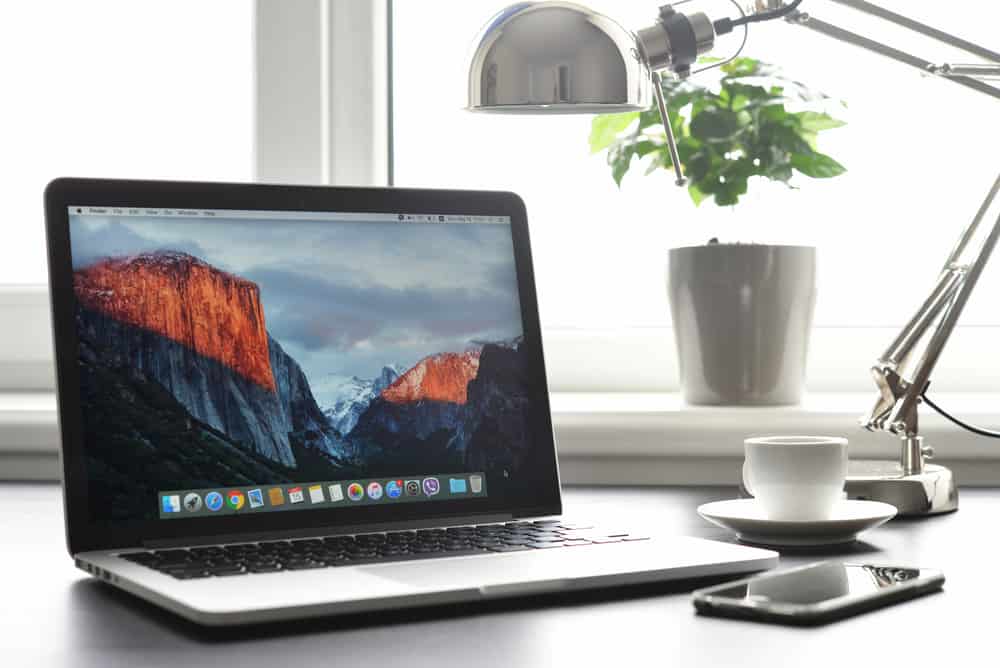If you are considering buying a MacBook, it is only fitting to research how long the battery lasts. Many laptops and desktop computers have good battery life, but only a few can boast up to three hours without being plugged into power.
That is part of the reason MacBooks are popular, especially if you expect a long battery life. Typical MacBook laptop batteries last about five years before you will need to get a replacement battery.
As for the battery life per charge, it lasts anywhere between four to six hours on average without charging it. These numbers can change, and the battery’s power lasts longer with correct calibration periodically.
However, these are only estimated times, as the battery can last longer than five years or less than that time. The same applies to the battery life between charges. In other words, several factors can affect how long the battery lasts, and this article explains factors that affect the battery life of a MacBook.
Table of Contents
The Battery Life of a Typical MacBook
The average battery life can be the same whether you use a MacBook Pro or MacBook Air. This depends on your daily usage and the usual load on the laptop. But some macOS versions do not show the battery percentage.
Some retailers advertise new MacBooks as having a nine to eleven-hour battery life. While it sounds excellent, it may be a marketing gimmick of the original capacity. Moreover, they do not reveal that they base their information on using a dim screen and minimal applications.
Using your MacBook in a normal way may not give you this number of hours. Besides, the more you use the computer, the weaker the battery gets. So, you may only get about five years from it at most.
Nevertheless, it can be challenging to determine how much time you have left on your computer. There is no exact science to determine how long this battery lasts, so we only have an estimate.
In reality, Mac’s battery cycles and lifespan depend on the applications on the computer and how heavily you use it per day. You must also consider the settings, such as screen brightness, as this can affect how long the battery lasts.
Factors Affecting a Mac’s Battery Life

There is no general application for how long a Mac battery lasts. It depends on individual usage, but the battery is also affected by the following:
- Charging habit
- Applications
- Bug
- Settings
- External connections
- Updates
1. Usage
The most obvious factor that affects your Mac battery’s health is your usage. You may always have it on standby or sleep mode, which impacts the battery’s lifespan in the long run. Also, constantly using it means you have to charge it often. And constant charging weakens the battery.
Many of us tend to close our laptops without fully shutting them down. For our desktops, we put them in sleep mode most of the time. While this method helps us to get back to our last task quickly, it is not healthy for the computer or battery. In other words, it weakens the device over time.
Sleep mode only works if you are away for a few hours. If you will not use the laptop for longer than a day, shut it down. However, if you will continue your task within a few hours or a day, do not shut it down. Constantly rebooting your computer wears the battery out.
Monitor your usage to note trends affecting the computer and prematurely damaging the battery. When not in use, shut the computer down, as it gives its components time to cool and reset.
2. Charging Habit
You cannot provide more battery juice by always connecting the computer to power, even after fully charging it. If anything, the battery weakens over time. It is best to disconnect it from the electric power once it is full to regulate the charge cycle.
Another aspect is how you store it when not in use. Shutting the computer down when it is fully drained negatively affects the battery. Ensure you charge it after several hours and store it again. The battery is better preserved if you store your Mac at 50% battery charge.
Note that the battery will eventually wear out over the years. However, careful usage, charging habits, and calibrating can extend the battery life beyond the expected years. You may find that it lasts more than the usual five years or 6 hours of regular usage.
3. Applications
Some apps quickly drain the battery, and macOS typically displays the app with the highest drainage power. For example, Chrome drains your Mac battery faster than other browsers, such as Safari. So, consider switching to a browser that preserves the battery.
Additionally, check background apps that constantly run or other applications you may not need. Delete those you do not need or disable them. These applications may not individually drain the battery but quickly deplete it when combined.
4. System Bug

Experts recommend updating every OS from time to time to protect the system and keep the computer’s functions up to date. So, updating your macOS when required is crucial to keep out bugs that may wear the system down. Otherwise, it may affect the computer, including the battery.
5. Settings
Some personalized settings can drain the battery quicker than the applications you use. If the screen is set to maximum brightness, the battery drains faster than a dimmed screen. It may not be ideal, but ensure the ambient brightness is higher than the screen brightness.
Not only will this preserve the battery, but it will also keep your eyes from getting weary due to excessive brightness. In addition, check the power-related settings and make necessary adjustments. This change may affect some apps and screen brightness. However, you will notice that the battery lasts longer than usual.
6. External Connections
Connecting Bluetooth devices and other devices while the computer runs affect the battery. This is especially true if the computer is not connected to electric power.
Some devices may be necessary for your tasks, but connecting too much hardware at a time is not healthy for the computer. Therefore, disconnect unnecessary external devices and close the corresponding apps to reduce the load on the battery.
Other Ways to Make your Mac Battery Last Longer
- Turn off the WiFi when you are not using it. It may not seem like it drains the battery when idle, but it still runs apps in the background and impacts the battery.
- Use the Energy Saver mode to reduce power consumption and protect the battery.
- Ensure you calibrate the battery once a month. It helps it last longer between charges and for years.
How to Check a Mac Battery Life

If your macOS does not show the battery icon or percentage on your laptop or your settings do not allow you to view it, there are several ways to check it. You can use a third-party application, Activity Monitor, or rely on Energy Saver to check the system information.
1. Use Third-party Applications
There are several third-party applications you can use to check the battery life of a MacBook. They are typically easier to use for this purpose because they show you the battery’s health information in less time than built-in apps.
The CoconutBattery app is an example of a third-party app you can use. However, you must also consider the disadvantages of using such an app. One is that it will run in the background and drain battery life.
Another disadvantage is that it may not produce accurate information. So, the battery percentage you see may be incorrect, and Apple has no responsibility for the information’s reliability or accuracy. In other words, you will have to rely on their integrity and what other users say about the app.
2. Use the Activity Monitor
You can use the Activity Monitor to calculate or determine your Mac’s battery life if your macOS is a newer one. Press the Space and Command buttons to enter the Activity Monitor. Once you do, enter Activity and go to the Energy option.
Selecting the Energy option takes you to a new window. Look at the bottom of the window and see the remaining battery percentage. You will also see the battery life since you last charged it and an estimate of the remaining time.
You can calculate how long the battery will last based on recent activity. You can also compare past usage and battery life to current activity and the battery life; it will help you determine what consumes the most energy from your computer.
3. Use Energy Saver
This method is most useful for older macOS versions. Open System Preference and select Energy Saver. You will see the remaining hours and minutes of battery life left without charging. Although this may be the easiest method, it only works for older operating systems.
Conclusion
A Mac battery can last between four to six hours between charge and five years as a lifespan. But this is only an estimate as there is no hard and fast rule governing how long a Mac battery lasts. It depends on a few factors, including how you use it, updates, settings, connected devices, and calibration.
Adjusting the settings and charging only when necessary preserve the battery. Remember that storing at a half-full charge is crucial, and do not always shut the computer down if you will be away for only a few hours.
